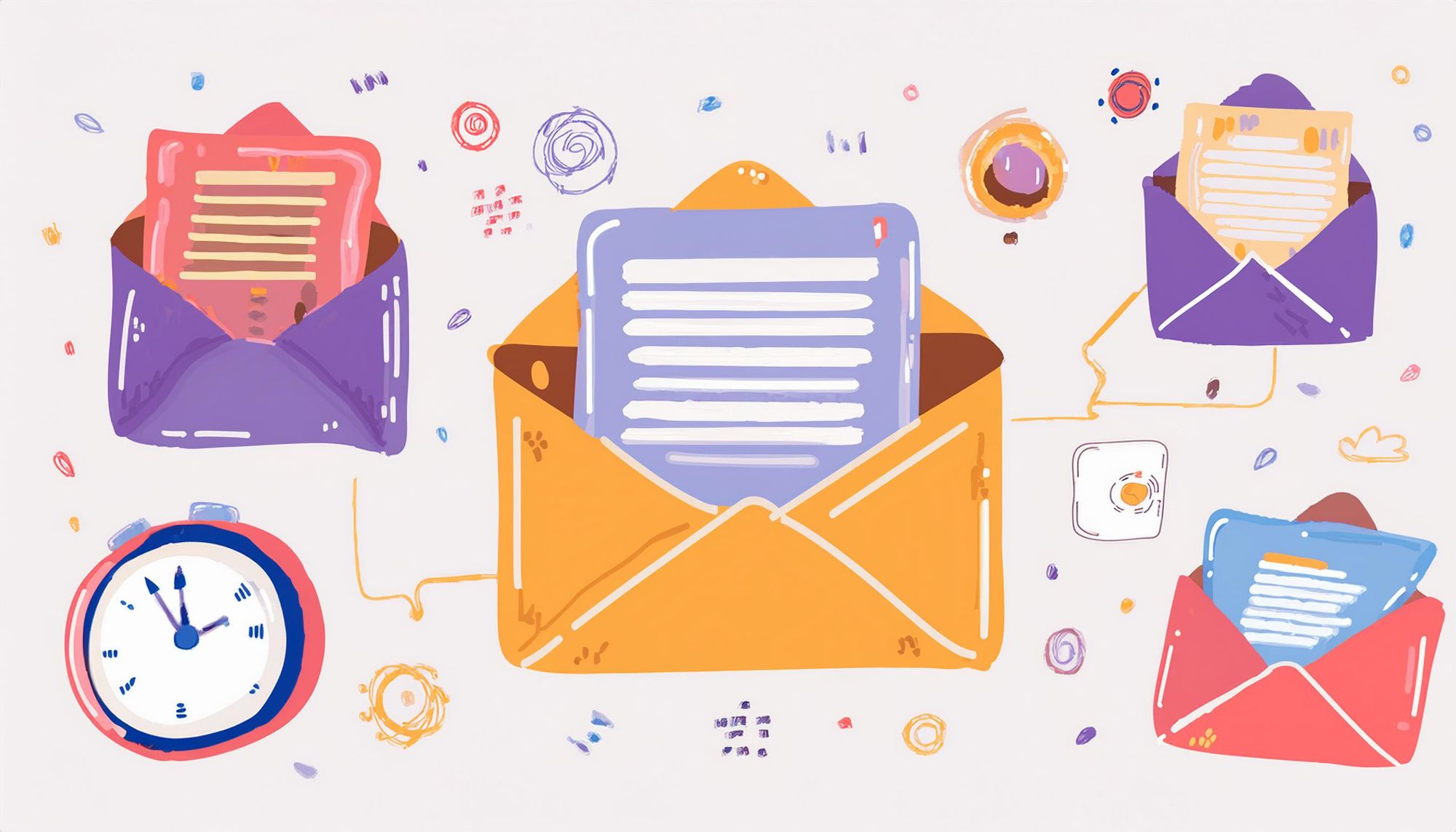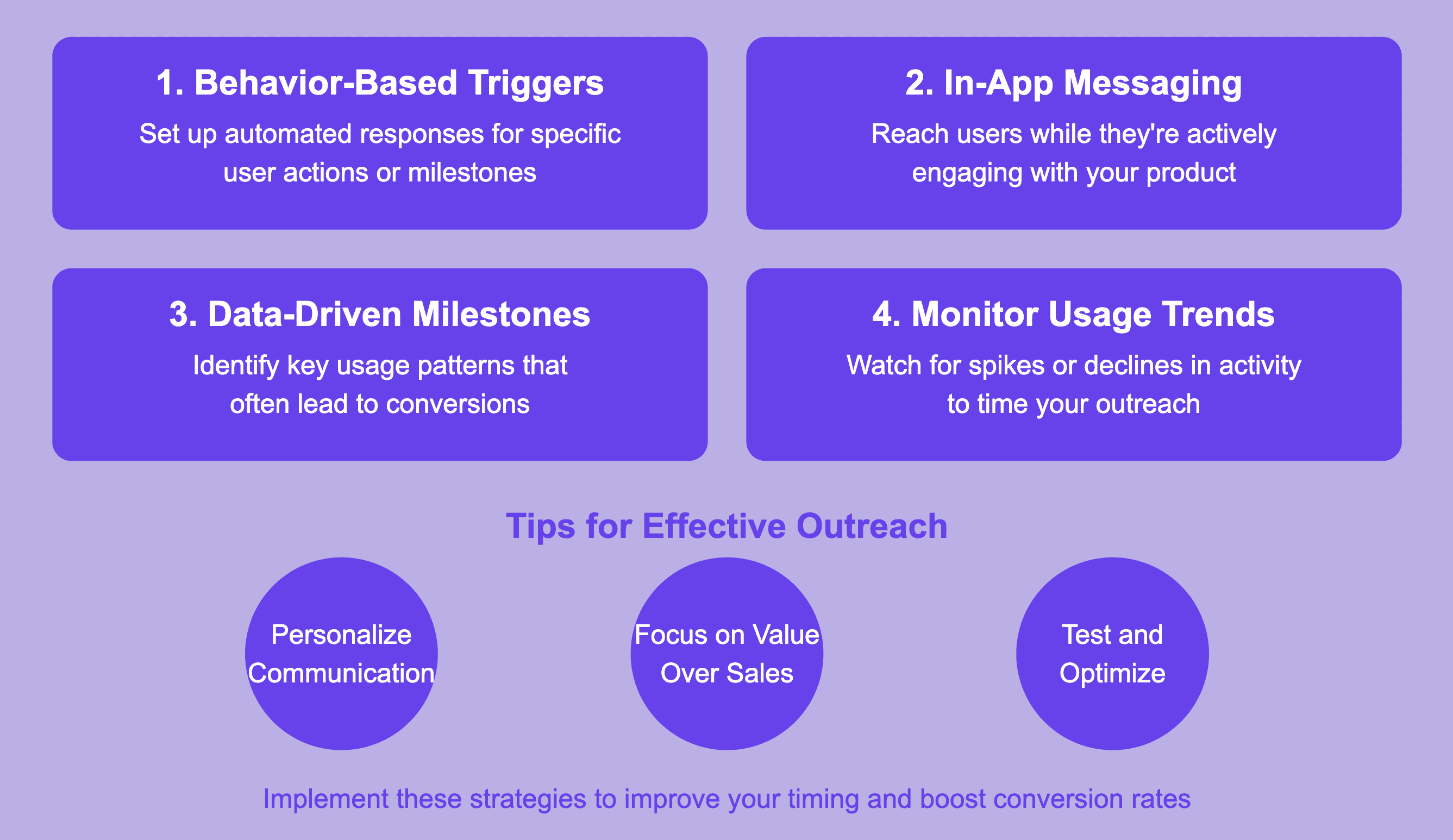
How to Perfect Outreach Timing for Product-Qualified Leads

par
Wiktoria Slowikowska
8 sept. 2024
Identifiez et convertissez vos utilisateurs les plus importants
Créer un compte

Timing is crucial in converting SaaS leads to customers. You've got Product-Qualified Leads (PQLs) - users who've signed up and engaged with your product. Great! But when should you reach out to them?
Too early, and you might seem pushy. Too late, and you could miss your chance. The right timing can significantly boost your conversion rates.
So, how do you nail this timing? When's the perfect moment to turn an interested user into a paying customer? Let's dive into the strategies that SaaS experts use to master this critical aspect of customer acquisition.
What Exactly Are Product-Qualified Leads (PQLs)?

First, let’s clarify what PQLs are. Unlike Marketing-Qualified Leads (MQLs), who have shown interest through activities like downloading a whitepaper or attending a webinar, PQLs are users who have taken actions within your product that indicate they’re likely to become paying customers. They’ve moved beyond casual browsing—they’re actively using your product in ways that signal a strong purchase intent. For example, they might have:
Set up a critical integration that ties your product to their workflow
Reached a certain usage milestone that correlates with high lifetime value
Experimented with premium features during a free trial period
These behaviors suggest that they see real value in your offering, making them prime candidates for conversion. But just because they’re qualified doesn’t mean they’re ready—yet. That’s where timing comes into play.
Why Does Timing Matter So Much?

Let’s dig into why timing is such a critical factor in converting PQLs. Can’t you just send them an email whenever you spot their interest? Not quite. Here’s why:
Engagement Peaks: Users go through phases of engagement with your product. There are moments when they’re deeply involved, discovering new features, and experiencing those “aha” moments. Reaching out during these high-engagement periods increases the likelihood of a positive response because your product is already top-of-mind for them.
Churn Prevention: Timing isn’t just about capitalizing on interest—it’s also about preventing loss. Users can get stuck or lose momentum, leading them to question the value of your product. By intervening at the right time, you can offer support, answer questions, or provide incentives that keep them from drifting away.
Motivational Leverage: The “aha” moment—when a user realizes your product is exactly what they need—is a powerful emotional driver. This is the perfect time to introduce a compelling offer, as the user is already motivated and excited about what your product can do for them.
So, When Should You Reach Out?

Understanding the importance of timing is one thing, but implementing it effectively is another. Here are some strategies to help you nail the timing of your outreach:
1. Leverage Behavior-Based Triggers
Behavior-based triggers are a game-changer for timely outreach. By tracking user actions in real-time, you can set up automated responses when they hit specific milestones. For example, if a user integrates your product with a key tool they rely on, it’s a clear signal they’re investing more in your solution. A timely message offering tips on how to maximize this integration, or highlighting related premium features, can be very effective.
But don’t stop at automation. Personalized follow-ups based on these behaviors can deepen the relationship and increase the likelihood of conversion. For instance, “We noticed you just integrated with [CRM tool]. Here’s how our other users are getting the most out of this setup…”
2. Harness the Power of In-App Messaging
In-app messaging is another powerful tool for timely engagement. Unlike emails that might sit unread in a cluttered inbox, in-app messages reach users while they’re actively engaging with your product. For example, if a user just completed a significant task or explored a new feature, a well-placed message could prompt them to explore premium options or guide them to the next step in their journey.
The key to in-app messaging is relevance. The message should feel like a natural extension of their current activity, not an interruption. This approach increases the chances that users will view the message as helpful rather than intrusive, which can significantly enhance their overall experience with your product.
3. Follow Data-Driven Milestones
Your product usage data is an invaluable resource for timing your outreach. By analyzing patterns in user behavior, you can identify key milestones that often lead to conversions. For example, you might find that users who create five projects within their first week are far more likely to upgrade to a paid plan.
Once you’ve identified these milestones, you can time your outreach to coincide with these critical points in the user journey. An email offering additional resources, a discount, or a free consultation when a user hits this milestone could be the nudge they need to commit to a paid plan.
4. Monitor Usage Trends
It’s also important to keep an eye on ongoing usage trends. If you notice a spike in activity from a user, it could indicate growing interest and a prime opportunity for outreach. Conversely, if you see a decline in usage, a timely check-in could help re-engage the user before they churn.
For example, let’s say a user who was previously active suddenly starts using your product less frequently. A well-timed email or call offering help or suggesting features they haven’t explored yet could rekindle their interest.
How to Make Your Outreach More Effective
Timing isn’t just about when you reach out; it’s also about how. Even if you hit the perfect moment, a poorly crafted message can undo all your good work. Here are some tips to ensure your outreach resonates:
Personalize Your Communication: Generic emails won’t cut it. Mention specific actions the user has taken and how your product can further meet their needs. “Hey, we noticed you’ve been using [Feature X] a lot. Did you know you can also do [Y]? Let’s show you how.”
Focus on Value Over Sales: Instead of pushing for a sale, offer something valuable. This could be an extended trial, a personalized demo, or a resource that helps them get more out of your product. Value-driven communication builds trust and positions your brand as genuinely interested in the user’s success.
Test and Optimize: Timing strategies are not one-size-fits-all. What works for one segment of users might not work for another. Continuously test different outreach timings, messages, and methods to see what resonates best with your audience. Use these insights to refine your approach over time.
Final Thoughts: Timing Can Be a Game-Changer
In the SaaS industry, the difference between a lead that converts and one that slips away often comes down to timing. By leveraging behavior-based triggers, personalized messaging, and data-driven insights, you can ensure you’re reaching out to users at the moment they’re most likely to convert.
Remember, it’s not just about identifying who to target—nailing the when can make all the difference. So, refine your timing strategy, keep testing, and watch as your conversions climb. After all, timing truly is everything.




